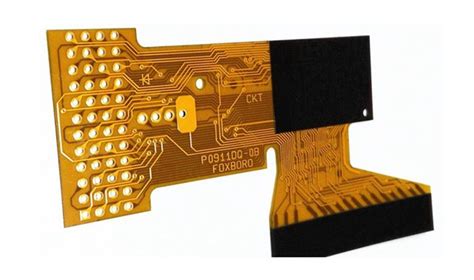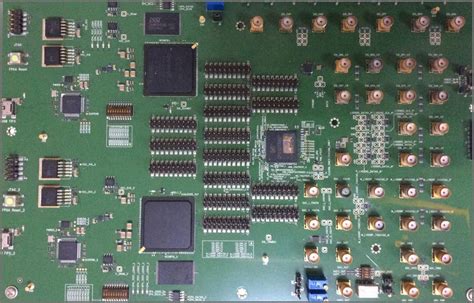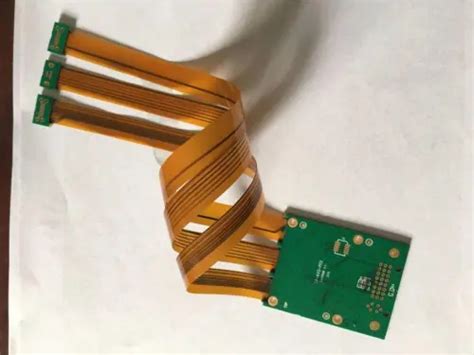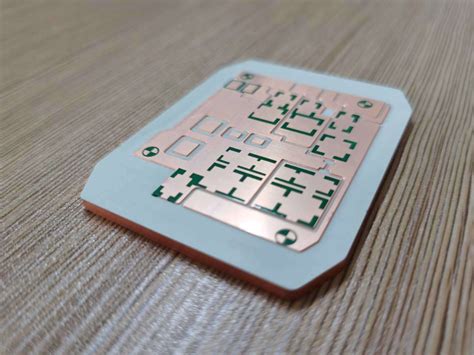Enhancing Electronics with High Quality PCB Assembly Solutions
Key Takeaways
High-quality PCB assembly is crucial for the success of electronic devices, as it significantly influences both performance and reliability. By prioritizing robust pcba processes, manufacturers can enhance the overall effectiveness of their products. One key benefit encompasses improved longevity, as precision in pcb assembly minimizes the likelihood of failures that can arise from weaker connections or inadequate materials. Additionally, investing in superior PCB manufacturing techniques ensures that devices operate efficiently under varying conditions, thereby maximizing consumer satisfaction.
Implementing best practices in pcb assembly is essential for achieving top-tier results. This includes adhering to strict quality control measures, ensuring components are assembled with meticulous attention to detail. Embracing innovations such as automated soldering and advanced inspection technologies further elevates the manufacturing process, providing developers with competitive advantages.
As industries evolve, staying informed about future trends in electronic manufacturing will better position businesses to adapt and thrive. By emphasizing quality and incorporating cutting-edge solutions, companies will not only enhance their product offerings but also contribute to a more reliable electronic landscape.
“Investing in high-quality pcba solutions today paves the way for tomorrow’s groundbreaking electronic advancements.”
Understanding the Importance of High-Quality PCB Assembly
High-quality PCB assembly (or PCBA) is crucial in elevating the performance of electronic devices across diverse applications. As the backbone of modern electronics, the quality of PCB assembly significantly influences a device’s reliability and efficiency. When components are meticulously positioned and soldered, it ensures optimal electrical connectivity and signal integrity, which are essential for consistent operation. Deficiencies in PCBA can lead to costly failures, malfunctions, or even complete product recalls due to inadequate performance. Moreover, embracing high standards in PCB assembly facilitates compliance with industry regulations and enhances a brand’s reputation in a competitive market. By prioritizing high-quality PCB assembly, manufacturers can significantly improve overall product lifecycles and reduce long-term costs associated with maintenance and repairs. This commitment to excellence not only drives operational efficiency but also fosters trust among consumers, ultimately reinforcing the critical role that quality PCBA plays in the success of modern electronics manufacturing.
Key Benefits of Investing in Superior PCB Manufacturing
Investing in superior PCB assembly not only enhances functionality but also ensures that electronic devices are built to the highest standards. One of the primary benefits of quality PCB assembly is the significant increase in reliability. By utilizing advanced materials and precise manufacturing techniques, companies can reduce the frequency of failures and improve overall device longevity. Furthermore, high-quality PCBA leads to better performance metrics; devices tend to operate more efficiently, resulting in optimized power consumption and enhanced processing speeds. Another crucial advantage is cost-effectiveness; while initial investments may be higher, the long-term savings associated with fewer repairs, replacements, or warranty claims can be substantial. Additionally, manufacturers investing in top-tier PCB assembly often find a competitive edge in the marketplace through improved product offerings that meet stringent regulatory requirements. With innovations constantly emerging in PCBA, such as automation and sophisticated testing methods, businesses can stay ahead by adapting these advancements into their production processes. Ultimately, superior PCB manufacturing is not just a smart investment but a necessary step for companies aiming to deliver exceptional electronic products that meet modern consumer demands.
Best Practices for Achieving Top-Tier PCB Assembly
Achieving top-tier PCB assembly requires a blend of meticulous planning, skilled execution, and the use of cutting-edge technologies. To start with, it’s crucial to have a well-defined design for manufacturability (DFM) process. This involves reviewing the design files to ensure they are optimized for pcb assembly. Engaging experienced engineers early in the design process can help preemptively address potential manufacturing challenges, thereby enhancing overall efficiency.
Another vital aspect is the selection of high-quality materials. The choice of substrates, solder types, and components directly impacts the reliability and performance of the PCBA (Printed Circuit Board Assembly). Investing in quality components ensures longevity and reduces failure rates in electronic devices.
Furthermore, implementing robust quality control (QC) measures during every stage of production is essential. Regular inspections and tests—such as Automated Optical Inspection (AOI) and X-ray inspection—can identify defects early, mitigating risks associated with faulty assemblies. Maintaining detailed documentation throughout the process fosters accountability and assists in traceability.
To illustrate these best practices effectively, consider the following table that outlines key components of a quality-focused PCB assembly process:
| Best Practices | Description |
|---|---|
| Design for Manufacturability | Optimize designs for ease of manufacturing to reduce production issues. |
| Material Selection | Utilize high-quality materials that enhance reliability and performance. |
| Quality Control | Implement rigorous inspection protocols to catch defects early on. |
| Continuous Training | Offer ongoing training to technicians to stay updated on best practices. |
Emphasizing these practices not only promotes high standards but also drives excellence within the electronics industry, paving the way for superior electronic devices that meet consumer expectations effectively.
Innovations in PCB Assembly Technologies
The landscape of pcb assembly is continuously evolving, driven by the demand for increased performance and efficiency in electronic devices. One of the most notable innovations in the pcb assembly sector is the integration of automated systems, which streamlines the manufacturing process and minimizes human error. This automation enhances precision, ensuring that every component is placed accurately, which is essential for achieving high reliability in electronic devices. Moreover, advancements in surface mount technology (SMT) have facilitated the creation of compact circuit boards without sacrificing performance or functionality.
Another significant development is the use of 3D printing in prototype development, allowing designers to rapidly iterate on their designs before committing to full-scale production. This approach not only accelerates time-to-market but also reduces expenses associated with traditional manufacturing methods. Additionally, innovations such as advanced soldering techniques and improved layering processes have further ensured that pcba quality meets rigorous standards, which is vital for sectors like aerospace and medical devices.
Furthermore, embracing smart manufacturing technologies, including artificial intelligence and machine learning, allows manufacturers to monitor production processes in real-time. These technologies provide insights that lead to optimized operational efficiency and a reduction in waste. Ultimately, these innovations are transforming PCB assembly into a more dynamic and responsive process that not only enhances product performance but also meets the growing demands of a technology-driven market.
The Impact of Quality Control on Electronic Device Performance
The significance of quality control in the pcb assembly process cannot be overstated, as it directly influences the performance and reliability of electronic devices. Implementing stringent quality control measures during pcba ensures that each component, trace, and layer of the circuit board meets established standards. This commitment to excellence results in a product that is not only robust but also capable of functioning optimally under various conditions. Furthermore, consistent quality control helps identify defects early in the manufacturing process, allowing for timely interventions that can save resources and reduce overall production costs. By focusing on high-quality pcb assembly, manufacturers can enhance device longevity and performance, ultimately leading to improved customer satisfaction. Adopting best practices in quality management fosters a culture of continual improvement in the manufacturing environment, ensuring that innovations in technology are effectively harnessed to advance precision and reliability in electronic devices.
Case Studies: Success Stories Featuring High-Quality PCB Solutions
High-quality PCB assembly (often referred to as PCBA) plays a crucial role in the success of electronic devices across various industries. For instance, consider the telecommunications sector, where the demand for reliable and high-speed communication is paramount. Companies that have invested in superior PCB assembly processes have reported significant improvements in device performance and longevity. One such case study involves a leading smartphone manufacturer that adopted advanced PCBA techniques to enhance signal integrity and reduce interference. As a result, they were able to launch a flagship device that not only surpassed performance expectations but also gained accolades for its durability.
In the medical device industry, another success story highlights how high-quality PCB assembly has facilitated the development of life-saving equipment. A notable example includes a cardiac monitoring device that experienced critical failures due to substandard PCBA. After switching to a manufacturer specializing in high-quality assembly with stringent quality control protocols, the company reported increased accuracy in readings and a drastic reduction in device recalls.
These cases exemplify the impact that high-quality PCB assembly can have on performance and reliability. Companies willing to invest in superior PCBA processes often see not just improved product outcomes but also enhanced customer satisfaction and trust. As technology evolves and industries demand higher precision and trustworthy solutions, the importance of quality in PCB assembly cannot be overstated.
Future Trends in PCB Assembly and Electronics Manufacturing
As technology continues to advance at a rapid pace, the landscape of PCB assembly and electronics manufacturing is evolving to meet the demands of increasingly complex devices. One of the most significant trends is the integration of automation and robotics in pcba processes, enhancing both speed and precision. Automated systems not only reduce human error but also enable manufacturers to produce higher volumes without compromising quality. Additionally, the shift towards high-quality PCB assembly tools that leverage artificial intelligence is allowing for real-time monitoring and predictive maintenance, ensuring that any potential issues can be addressed before they impact production.
Moreover, sustainability is gaining traction as an essential consideration in manufacturing practices. Companies are now prioritizing environmentally friendly materials and processes that minimize waste while maintaining PCB assembly standards. This approach not only aligns with global sustainability goals but also appeals to a growing consumer base that values environmentally responsible products.
Another notable trend is the focus on miniaturization and complex designs within electronic devices, necessitating advancements in pcba technology that can accommodate densely packed components without sacrificing performance or reliability. As manufacturers adapt to these developments, they are investing in advanced simulation tools that allow for comprehensive testing and validation processes during the design phase.
These trends indicate that the future of high-quality PCB assembly will be characterized by a blend of innovative technologies aimed at improving efficiency, reducing environmental impact, and enhancing product reliability—ultimately shaping how electronics are conceived and manufactured in today’s market.
Conclusion
In conclusion, the role of high quality PCB assembly cannot be overstated in today’s fast-paced electronics landscape. As we have seen throughout this article, investing in superior pcba processes significantly enhances the reliability and performance of electronic devices. Through employing best practices and incorporating the latest advancements in PCB assembly technologies, manufacturers can ensure their products meet the stringent demands of modern consumers. Additionally, maintaining robust quality control measures is pivotal to achieving not only operational efficiency but also exceptional product performance. As industries continue to evolve, staying abreast of future trends in pcb assembly will be essential for companies aiming to thrive in a competitive market. The discussed case studies showcase the tangible benefits derived from commitment to high-quality PCB solutions, which serve as a roadmap for future innovations and practices within the electronics sector. By prioritizing quality at every stage of production, businesses can secure their place at the forefront of technological advancement.
FAQs
What is PCB assembly?
PCB assembly (PCBA) refers to the process of connecting electronic components to a printed circuit board (PCB) to create a functional electronic device. This includes soldering components onto the PCB and performing any necessary testing.
Why is high-quality PCB assembly important?
Investing in high-quality PCB assembly ensures reliability, enhances the performance of electronic devices, and reduces the likelihood of defects. Quality assemblies lead to longer-lasting products and better overall user experiences.
What are the key benefits of superior PCB manufacturing?
Superior PCB manufacturing offers several advantages, including improved electrical performance, greater durability, faster turnaround times, and reduced costs associated with repairs and replacements.
How can I achieve top-tier PCB assembly?
To achieve top-tier PCBA, it’s essential to employ best practices such as utilizing high-quality materials, adhering to stringent quality control measures, and keeping up with industry innovations.
What are some innovations in PCB assembly technologies?
Innovations in PCB assembly technologies include advancements in automation, surface mount technology (SMT), and improved soldering techniques that enhance precision and efficiency during manufacturing.
For further insights on pcb assembly, please click here: Enhancing Your Electronics with Quality PCB Assembly






